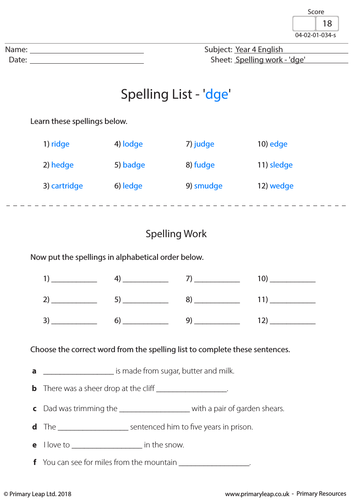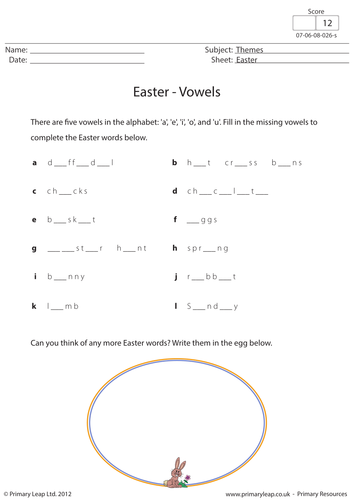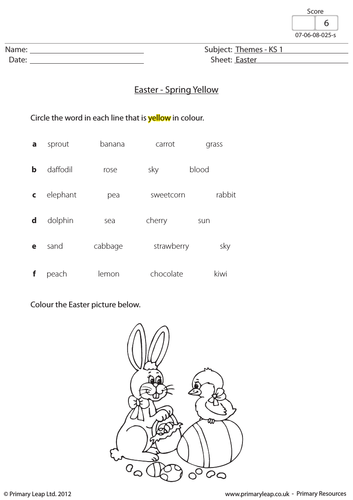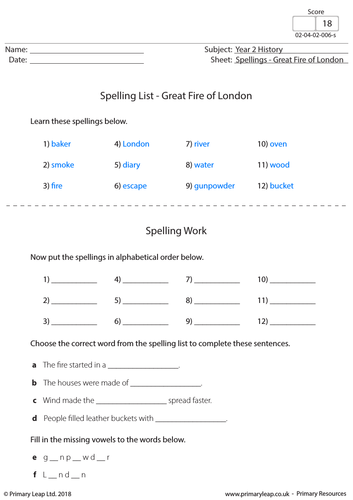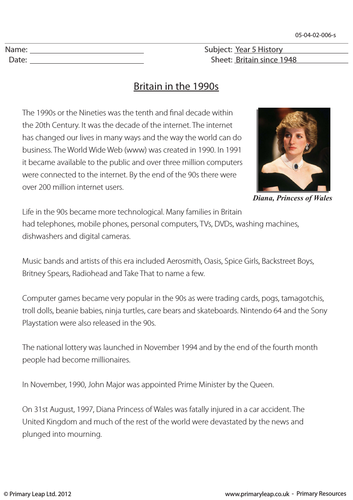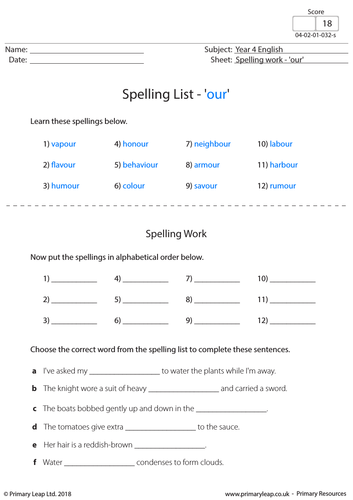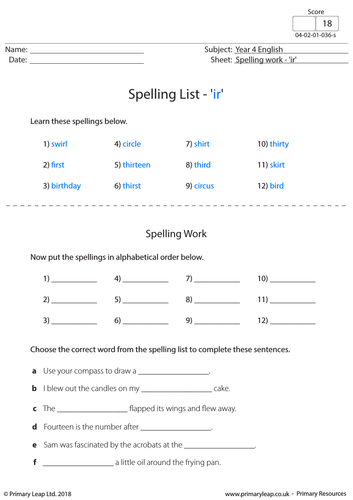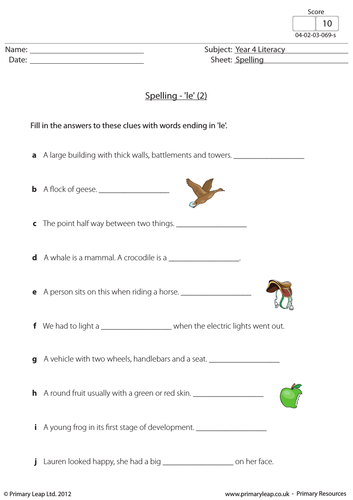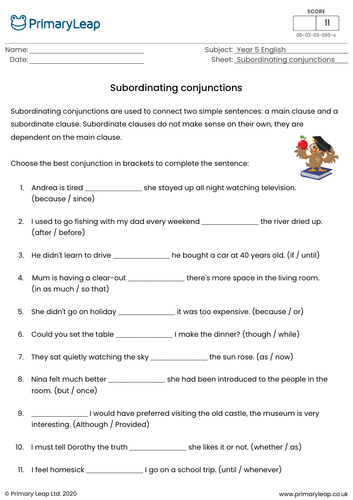560Uploads
455k+Views
211k+Downloads
Literacy for early childhood

KS2 Spellings - 'dge'
A KS2 English resource including a list of 12 words with ‘dge’ for students to learn. There are exercises including putting the words in alphabetical order and choosing the correct word from the spelling list to complete the sentences.
This resource was created by Primary Leap

English Resource - Missing Vowels: Easter
This English worksheet will help children learn their vowels. The words are associated with Easter and can be used as a fun Easter resource! This worksheet was created by primaryleap.co.uk

KS2 English Resource - Adding 'ing'
This KS2 English worksheet focuses on adding ‘ing’ to words. Students read the words and write them correctly in the boxes provided.
This worksheet was created by Primary Leap

KS2 English Resource - Apostrophes
A primary English resource on writing sentences and adding the missing apostrophes.
This worksheet was created by Primary Leap

Easter Resource - Spring Yellow
Students circle the word in each line that is yellow in colour.
This worksheet was created by Primary Leap

Spelling list - Great Fire of London
This year 2 literacy worksheet includes a list of spellings associated with the Great Fire of London.
This worksheet was created by Primary Leap

KS2 History Resource: Britain in the 1990s
KS2 History Resource - Britain since 1948. This worksheet includes some interesting facts and events in the 1990s. Students read the text and answer the study questions.
This worksheet was created by Primary Leap

KS2 English Worksheet - Spellings 'our'
A KS2 English resource including a list of 12 words with ‘our’ for students to learn.
This worksheet was created by Primary Leap

KS2 English Worksheet - Spellings 'ir'
A KS2 English resource including a list of 12 words with ‘ir’ for students to learn. There are exercises including putting the words in alphabetical order and choosing the correct word from the spelling list to complete the sentences.
This resource was created by Primary Leap

KS2 English Resource: Spelling - 'le'
This year 4 spelling worksheet focuses on words ending in ‘le’. Children must read the clues and fill in the missing ‘le’ words.
This worksheet was created by Primary Leap

Literacy Resource - Verbs and Prepositions
Some verbs are usually followed by prepositions before the object of the verb. Students read the sentences and circle the correct word to complete each sentence.
This worksheet was created by Primary Leap

KS2 English - Coordinating conjunctions
Coordinating conjunctions are used to connect sentences, words and phrases. They act as a kind of glue, linking the text together to help the sentences flow smoothly. This English resource asks students to choose the best conjunction in brackets to complete the sentences.
Worksheet created by Primary Leap

Circle the Contractions - English Resource
A contraction is a word made by shortening and combining two words. Words like can’t (can + not) and don’t (do + not) are contractions. Students read each sentence and circle the contraction in each sentence.

Active or passive?
An active voice is when the subject of the sentence is performing the act. A passive voice is when the subject of the sentence is having something done to it by somebody else. Often the word ‘by’ is used, but not always. This English worksheet asks students to write ‘active’ or ‘passive’ after each sentence.
This worksheet was created by Lauren Savage

Verb prefixes - dis and mis
A prefix is a group of letters added before a word to alter its meaning. The prefix ‘dis’ is generally used to make a word negative. The prefix ‘mis’ means badly, wrongly or incorrectly. This English resource asks students to choose the correct word to complete the sentence.
This worksheet was created by Lauren Savage

Relative clauses
Relative clauses are used to connect sentences. We use relative clauses to give additional information about something without starting a new sentence. The most common relative pronouns are: who, whom, whose, which and that. This English resource asks students to choose the best relative pronoun to complete the sentences.
This worksheet was created by Lauren Savage

KS2 English - Subordinating conjunctions
Subordinating conjunctions are used to connect two simple sentences: a main clause and a subordinate clause. Subordinate clauses do not make sense on their own, they are dependent on the main clause. This English activity asks students to choose the best conjunction in brackets to complete the sentences.
Resource created by Lauren Savage

Verb prefixes - de and re
A prefix is a group of letters added before a word to alter its meaning. The prefix ‘de’ is used to reverse the verb’s actions. It can also mean ‘down’ such as in the words decrease or decline. The prefix ‘re’ means to do again. This English resource asks students to choose the correct word to complete the sentence.
This worksheet was created by Lauren Savage

KS2 English Resource: Spellings - 'ight' and 'gue' words
This English worksheet asks students to complete the sentences by choosing the correct word from the word bank. This resource focuses on words with ‘ight’ and ‘gue’.
This worksheet was created by Lauren Savage @ Primary Leap

Famous Inventions & Inventors - W
This resource was created by Lauren Savage @ Primary Leap
This KS2 worksheet is about famous inventions and inventors starting with the letter w. This printable can be added to a lesson plan or used as an extra resource or revision aid.

